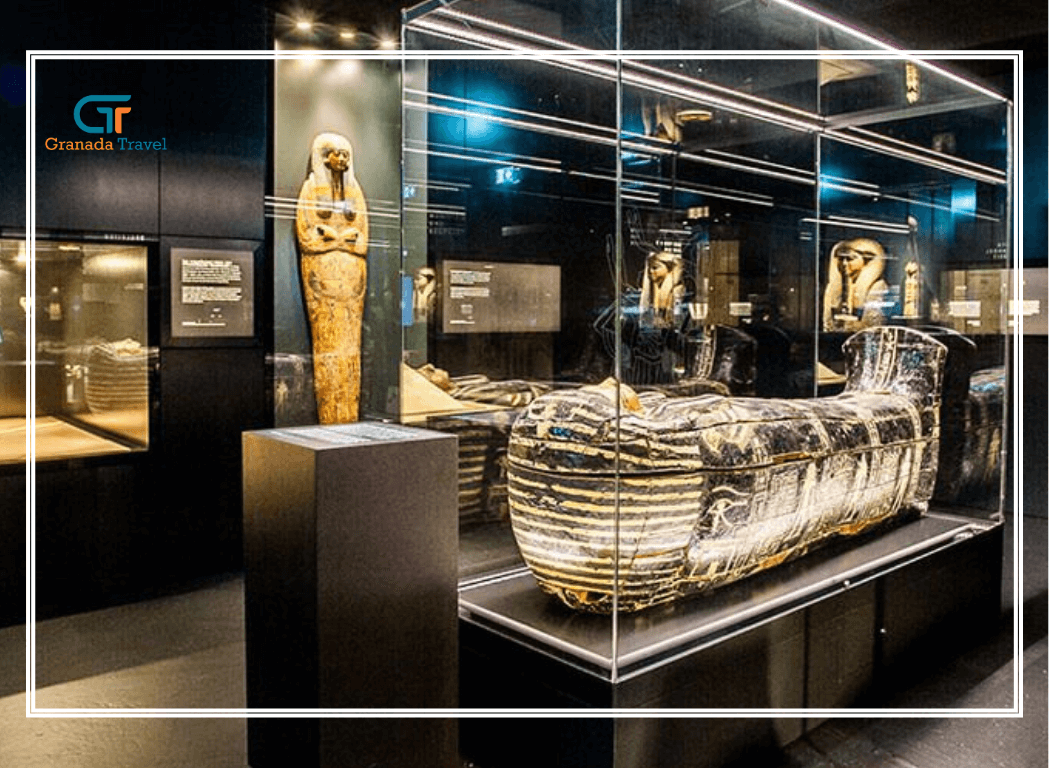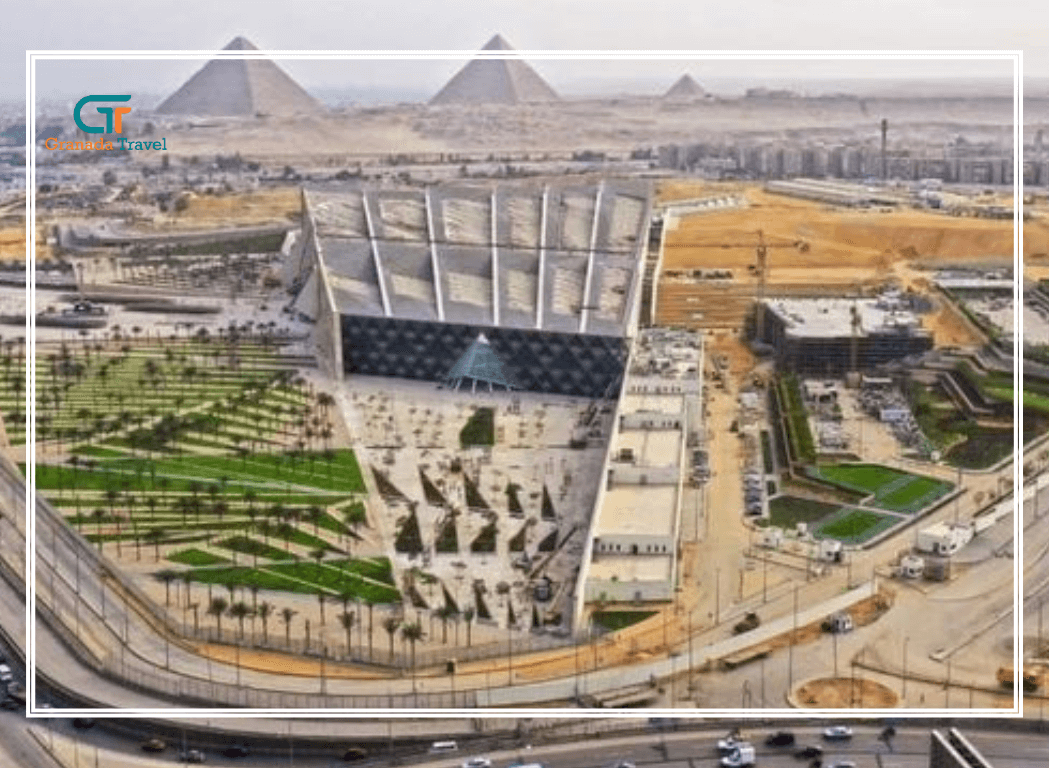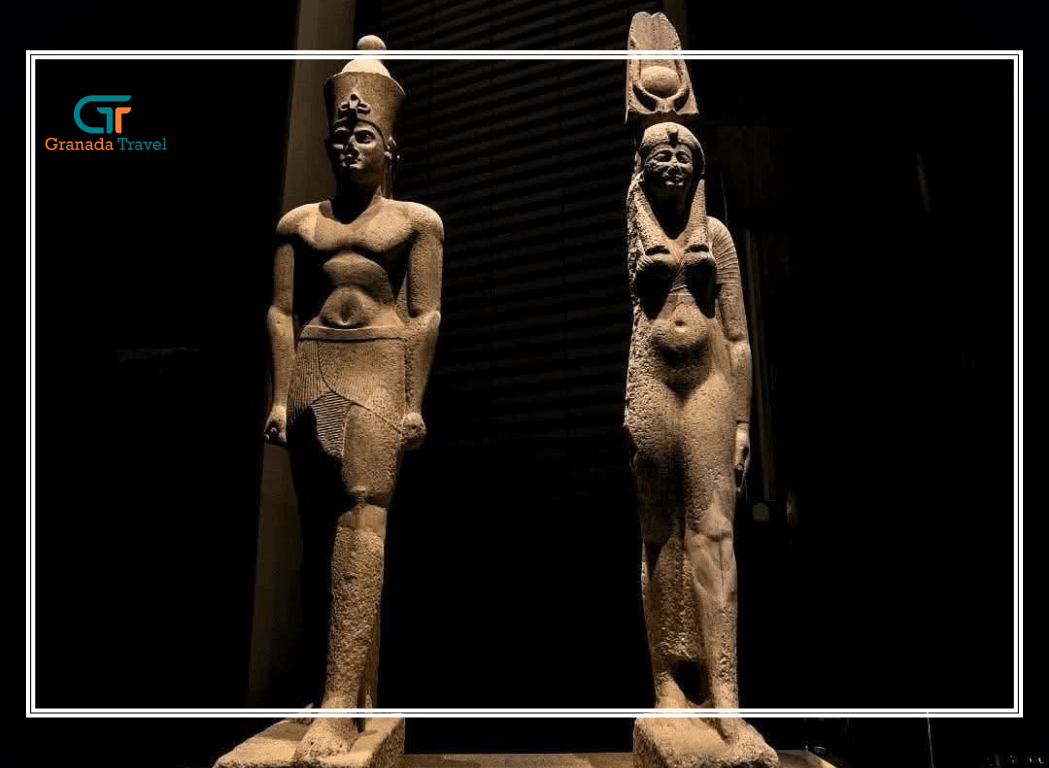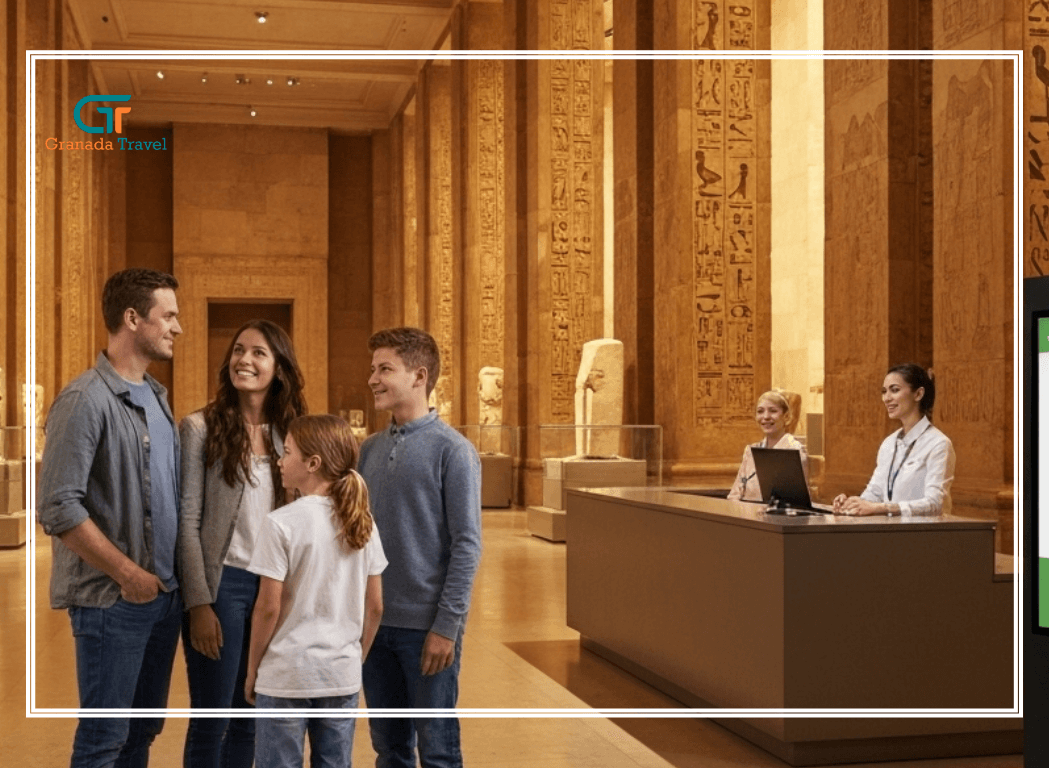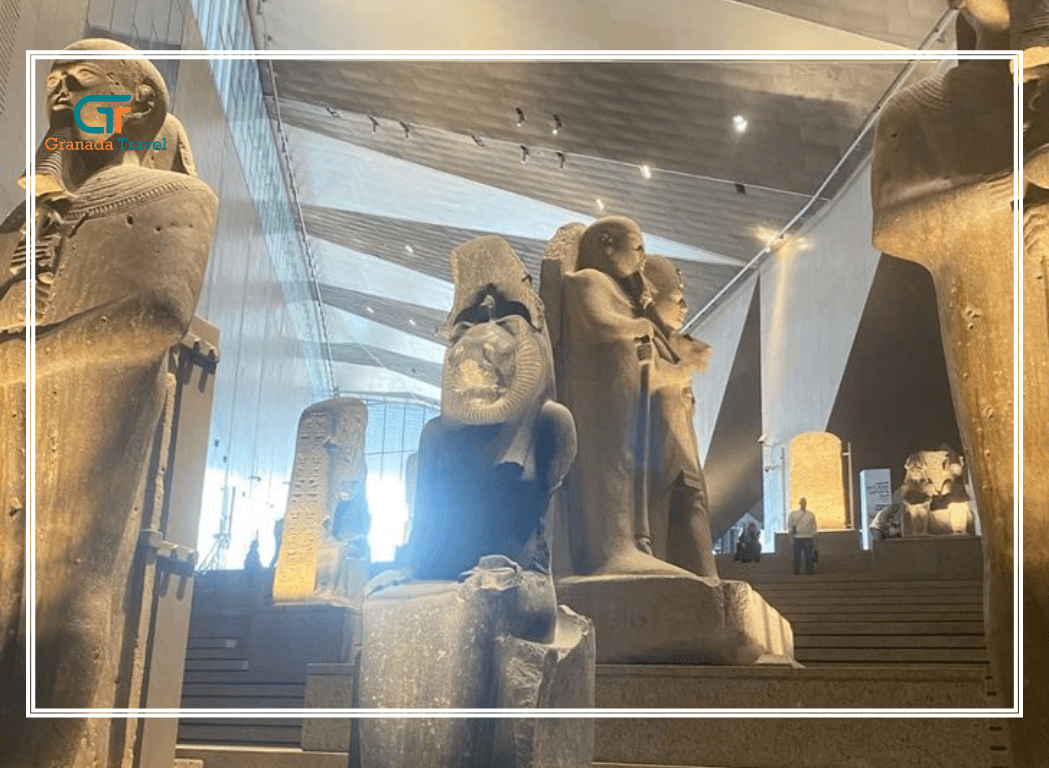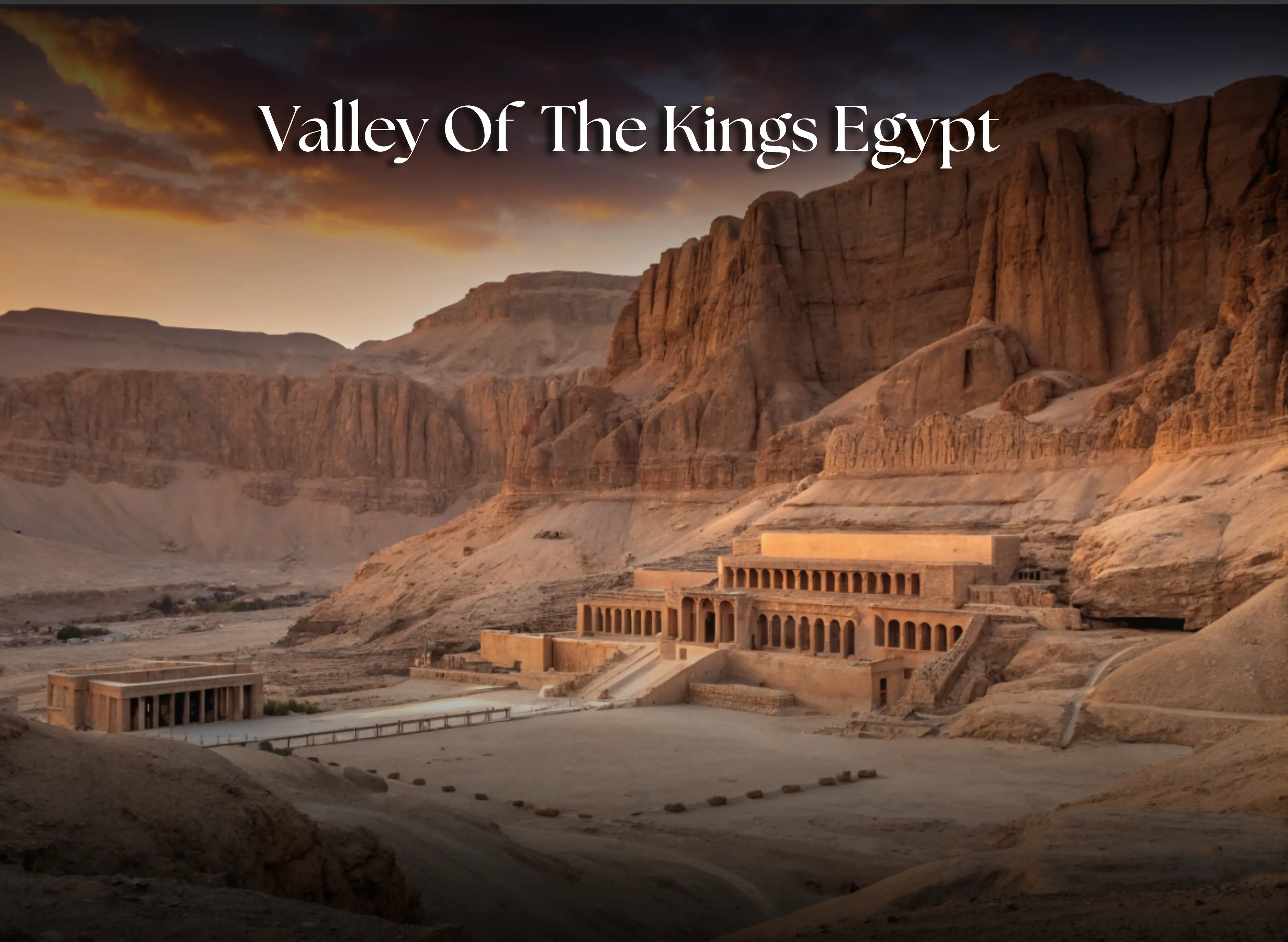
One of The Most Captivating Places on Earth: The Valley of The Kings, Egypt
Nestled on the west bank of the Nile River near the city of Luxor, Egypt, the Valley of the Kings, Egypt stands as one of the most remarkable archaeological sites in the world. This ancient necropolis, a UNESCO World Heritage Site, served as the burial ground for Egypt’s pharaohs and powerful nobles during the New Kingdom (circa 1539–1075 BCE). Known for its intricately decorated tombs and historical significance, the Valley of the Kings, Luxor, Egypt offers a glimpse into the grandeur and mystery of ancient Egyptian civilization. In this comprehensive guide, we’ll delve into the wonders of the Valley of the Kings, Egypt, exploring its history, significance, must-see tombs, and practical tips for planning your Valley of the Kings, Egypt tour.
Where is the Valley of the Kings, Egypt?
For those wondering where is the Valley of the Kings, Egypt or where is the Valley of the Kings located in Egypt, the answer lies in its strategic position near Luxor, Egypt. Situated on the West Bank, Luxor, Egypt, the Valley of the Kings is approximately 500 kilometres south of Cairo and a short distance from the bustling city of Luxor, often referred to as the world’s greatest open-air museum. The valley is tucked into a rugged, arid landscape of limestone cliffs, which provided a natural fortress to protect the royal tombs from intruders. Its proximity to the Nile River made it accessible yet secluded, ensuring the pharaohs’ eternal rest remained undisturbed—at least in theory.
To visualise its location, a map of Egypt, Valley of the Kings would show it just across the Nile from Luxor’s city centre, near other notable sites like the Valley of the Queens, Luxor, Egypt and the Valley of the Nobles. This strategic placement underscores its importance in ancient Egyptian burial practices, as the west was symbolically associated with the afterlife.
A Brief History of the Valley of the Kings, Ancient Egypt
The Valley of the Kings, ancient Egypt was established as a royal burial site during the New Kingdom, a period when Egypt reached the height of its power and wealth. Unlike the pyramids of the Old Kingdom, which were vulnerable to tomb robbers, the pharaohs of the New Kingdom, starting with Thutmose I, chose the secluded valley to conceal their burials. Over nearly 500 years, more than 60 tombs were carved into the rock, housing pharaohs, their queens, and high-ranking officials.
The Valley of the Kings, Egypt facts reveal a site of unparalleled historical value. The tombs were designed to guide the deceased through the afterlife, adorned with vivid wall paintings, hieroglyphs, and intricate carvings depicting scenes from the Book of the Dead and other sacred texts. These artworks were not merely decorative but served a spiritual purpose, ensuring the pharaoh’s safe passage to the afterlife.
Perhaps the most famous discovery in the Valley of the Kings, Egypt was the tomb of Tutankhamun (KV62), unearthed by Howard Carter in 1922. Unlike many other tombs, which were plundered in antiquity, Tutankhamun’s tomb was remarkably intact, revealing treasures like the iconic gold mask now housed in the Egyptian Museum in Cairo. This discovery brought global attention to the Valley of the Kings, Luxor Egypt, cementing its status as a must-visit destination.
[cta-actions]
Must-See Tombs in the Valley of the Kings, Egypt
A Valley of the Kings, Egypt tour typically allows visitors to explore a selection of tombs, as not all are open simultaneously to preserve their delicate conditions. The number of accessible tombs varies, but a standard ticket grants entry to three, with additional fees for special tombs like Tutankhamun’s. Below are some highlights of the Egypt tombs, Valley of the Kings that you shouldn’t miss:
Tomb of Tutankhamun (KV62)
The tomb of the boy king is a highlight for many visitors. Though smaller than others, its historical significance and the story of its discovery make it a must-see. The burial chamber, still containing Tutankhamun’s mummy, features stunning wall paintings.
Tomb of Ramses II (KV7)
Ramses II, one of Egypt’s most powerful pharaohs, had a grand tomb that reflects his reign’s opulence. Though damaged by flooding, its scale and remaining artwork are impressive.
Tomb of Seti I (KV17)
Considered one of the most beautifully decorated tombs, Seti I’s burial site boasts intricate reliefs and vibrant colours. Its long corridors and detailed astronomical ceiling are breathtaking.
Tomb of Merneptah (KV8)
The son of Ramses II, Merneptah’s tomb features well-preserved reliefs and a massive granite sarcophagus, showcasing the craftsmanship of the era.
For those eager to capture the beauty of these sites, Valley of the Kings, Egypt photos often highlight the vivid hues of the wall paintings and the eerie atmosphere of the underground chambers. However, photography is restricted in many tombs to protect the ancient artwork.
Secrets of Egypt, Valley of the Kings
The secrets of Egypt, Valley of the Kings continue to captivate historians and archaeologists. Despite extensive exploration, new discoveries are still being made. In recent years, advanced technologies like ground-penetrating radar have revealed potential hidden chambers, sparking speculation about undiscovered tombs. For instance, ongoing investigations around Tutankhamun’s tomb have hinted at possible secret rooms, perhaps linked to Queen Nefertiti.
Another intriguing aspect is the “Curse of the Pharaohs,” a legend born from the mysterious deaths of some involved in Tutankhamun’s tomb excavation. While modern science attributes these to natural causes like mould or bacteria, the myth adds an air of mystique to the Valley of the Kings, Egypt.
Planning Your Valley of the Kings, Egypt Tour
A visit to the Valley of the Kings, Egypt is a highlight of any Egypt, Valley of the Kings holidays. Here’s how to make the most of your trip:
- Getting There
The Valley of the Kings, Egypt location is easily accessible from Luxor. You can reach the West Bank by ferry, taxi, or organised tour from the city centre. Many visitors opt for guided tours, which often include the Luxor Temple and other nearby sites like the Valley of the Queens, Luxor, Egypt.
- Best Time to Visit
The ideal time for holidays to Valley of the Kings, Egypt is between October and April, when temperatures are cooler. Summer months can be scorching, with temperatures exceeding 40°C, making exploration uncomfortable.
- Tickets and Access
A standard ticket to the Valley of the Kings, Luxor, Egypt costs around 240 EGP (approximately £10) and allows entry to three tombs. Special tombs like Tutankhamun’s or Seti I’s require additional tickets. The site is open daily from 6:00 AM to 5:00 PM, though hours may vary seasonally.
- What to Bring
Bring sunscreen, a hat, and plenty of water, as the valley offers little shade. Comfortable shoes are essential for navigating the rocky terrain and tomb steps. A guidebook or knowledgeable tour guide can enhance your understanding of the site’s history.
Nearby Attractions
Combine your visit with other West Bank, Luxor, Egypt sites like the Valley of the Nobles, which houses tombs of high-ranking officials, or the Valley of the Queens, Luxor, Egypt, where Queen Nefertari’s tomb is a highlight. The Luxor Temple on the East Bank is also a must-see for its stunning architecture.
Tips for an Unforgettable Experience
- Hire a Guide: A qualified Egyptologist can bring the Valley of the Kings, ancient Egypt to life with stories and insights.
- Visit Early: Arrive at opening time to avoid crowds and heat.
- Respect Preservation Efforts: Follow rules, such as no touching or flash photography, to help preserve the tombs.
- Combine with Other Sites: A full-day tour of the West Bank, including the Valley of the Queens, Luxor, Egypt and Valley of the Nobles, offers a comprehensive experience.
Why Visit the Valley of the Kings, Egypt?
The Valley of the Kings, Egypt is more than a historical site; it’s a portal to the ancient world, where the beliefs, artistry, and ambitions of a great civilisation are etched into the rock. Whether you’re drawn by the allure of Tutankhamun’s tomb, the vibrant artwork of Seti I’s burial chamber, or the secrets of Egypt, Valley of the Kings still waiting to be uncovered, this destination promises an unforgettable journey.
For those planning Egypt, Valley of the Kings holidays, the site’s proximity to Luxor, Egypt makes it an ideal base for exploring other treasures of the region. From the majestic Luxor Temple to the serene Valley of the Queens, Luxor, Egypt, the area is a treasure trove for history enthusiasts.
Iconic Archaeological Site
The Valley of the Kings, Egypt remains one of the world’s most iconic archaeological sites, offering a profound connection to the past. Its hidden tombs, intricate artistry, and enduring mysteries make it a must-visit for anyone fascinated by ancient history. Whether you’re capturing Valley of the Kings, Egypt photos or exploring its depths on a guided Valley of the Kings, Egypt tour, this sacred site will leave you in awe of Egypt’s legacy. Plan your holidays to Valley of the Kings, Egypt today and step into the heart of ancient Egypt’s royal afterlife.
[cta-actions]

